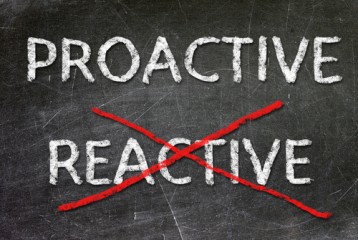Proactive Safety: No Magic Pill
 There’s No Magic Pill for Safety
There’s No Magic Pill for Safety
As employees in or owners of transportation companies, you know very well that accidents happen. There’s no magic pill that will make your drivers accident-proof. As technology has advanced, so has safety with the advent of the seat belt, air bag, anti-lock/ABS brakes, crumple zones etc. Even as I’m writing this, more and more cars are pushed off the assembly line with blind-spot monitoring and back-up camera. These advances help make the driver safer in the event of an accident as well as prevent an accident from happening in the first place. Even so, there’s much more to driving, especially in the transportation industry.
Qualified?
There’s a reason that drivers of large specialty vehicles require a separate license to be deemed “qualified” to drive them. The reason qualified is in quotes is because, even after a driver gets his or her license to operate a big rig or transit bus, it’s still not enough. Many companies recognize this and have their own training programs to increase driver skills. However, many of these additional training programs still lack the necessary training to produce safe effective drivers. Often the training programs are too short or ineffective in how they attempt to educate new drivers.
No Quotation Marks Allowed!
Proactive safety is all about making the effort to ensure every driver your company hires is indeed qualified to drive, not “qualified” to drive. When accidents with large vehicles do occur, they are often tragic. Whether you are the safety director, a risk manager or even the owner, getting that call in the middle of the night that an accident has occurred immediately sinks your heart and, shortly following, your wallet. It’s impossible to eliminate accidents completely, but every transportation company should strive to keep them to a minimum by ensuring their drivers are safe, effective, and well-versed in defensive driving.
Something Bad WILL Happen
Big or small, an initial investment may seem like an unneeded expense. To think your drivers will never have an accident would be just as naive as thinking you will never have a customer complaint. There are so many instances in our lives where we waited for something to happen before we took action, where we were reactive rather than proactive. Whether in grade school where failing a test led to studying “more”. Or, later on in adulthood when we receive penalties from past due bills because we forgot to pay them. We waited for something bad to happen in order to react and change. Sure, it’s a part of learning and growing up, but it should never be alright to gamble like that with driver and civilian safety.
Why wait for a tragic event and a debt causing claim before investing in an effective driver training program?
Being Proactive Saves Lives (and Money)
Being proactive will serve your business well in several ways. First, it shows your company and your drivers that you care safety and want to ensure that everyone out on the road should be out on the road. Second, it sets a precedent. It’s one thing to just say safety is your number one priority and another to actually create a safety culture. Finally, it reduces the amount of accidents you will have. You won’t have to look far to find that the return on investment from paying many of the top safety training companies is quite large. If your driver safety training program prevents even ONE fatality, you would save much more on your losses than the money spent on the program to begin with.
Start on Your Safety Culture Today
It’s not good practice to sit back and wait for something bad to happen. Be proactive.
Take the time to evaluate your current driver training programs. Are they effective? Are they doing enough? If the answer is yes, then you already run a safety driven culture. If, as is often the case, there’s room for improvement, then make the effort to improve. Think of your drivers, think about your company, weigh your options, do your research and put forth an action plan. The investment in proactive safety is worth the effort.